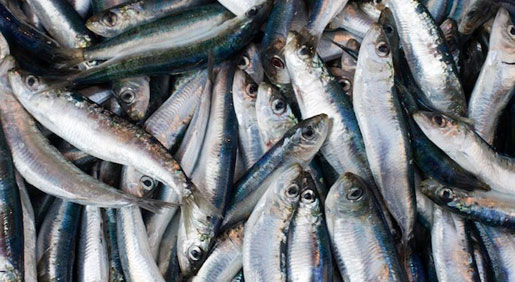
Fishing practices are harming our ocean ecosystems at an alarming rate by depleting populations, polluting the water, and destroying habitats. Making sustainable seafood choices is something we can all do to make a difference. There’s an array of apps, websites, and other tools to nudge us in the right direction, but which one is right for your lifestyle? We did some research so you can make an educated choice.
You can also download a printable version of our Sustainable Seafood Chart.
GUIDE: Blue Ocean Institute
PLATFORMS: Website and app
TARGET: Chefs and consumers
SPECIAL FEATURES: Users without smart phones can text the name of a fish to get sustainability info through the “FishPhone” program
WHAT WE LEARNED: Partnering with the Chefs Collaborative, the institute developed a “Green Chefs, Blue Ocean” program that includes an interactive online curriculum for chefs and culinary students.
GUIDE: Monterey Bay Aquarium’s Seafood Watch
PLATFORMS: Website, app, and pocket guide
TARGET: Chefs and consumers
SPECIAL FEATURES: The app locates sustainable choices via GPS, and the website features sustainable recipes and a “tools for chefs” category with a Buyer’s Guide and culinary chart of alternatives
WHAT WE LEARNED: U.S.-farmed cobia is a tasty alternative to the coveted (and threatened) Chilean sea bass.
GUIDE: Safe Seafood
PLATFORMS: App only ($1)
TARGET: Concerned consumers
SPECIAL FEATURES: The only app that compiles research from ten different sources, it allows you to sort from best to worst; 10% of proceeds from app sales are donated to the Environmental Defense Fund
WHAT WE LEARNED: Roughly 3.7 million acres of critical mangrove and coastal habitats have been destroyed by shrimp farms overseas. U.S. farms are a better alternative, and wild pink shrimp from Oregon are best.
GUIDE: Environmental Defense Fund’s Seafood Selector
PLATFORMS: Website, mobile-optimized site, and pocket guide
TARGET: Concerned consumers
SPECIAL FEATURES: Offers toxicity and health info and both seafood and sushi guides; works with troubled fisheries to improve conservation
WHAT WE LEARNED: Canned salmon is actually in the “eco-best” category. American eels have very high levels of mercury and PCBs—it’s recommended that adults eat no more than one serving per year!
GUIDE: Food & Water Watch’s Smart Seafood Guide
PLATFORMS: Website and pocket guide
TARGET: Concerned consumers
SPECIAL FEATURES: Includes invasive species and allows you to search by flavor characteristics (e.g., mild, steak-like)
WHAT WE LEARNED: Yet another reason to buy local: less than 2% of imported seafood is actually inspected.
GUIDE: Natural Resources Defense Council
PLATFORMS: Website only (pocket guide just for mercury levels)
TARGET: Concerned consumers
SPECIAL FEATURES: Has sustainable recipes, a local produce map, and a host of celebrity supporters, including Leonardo DiCaprio, Alec Baldwin, and Stella McCartney
WHAT WE LEARNED: Most tilapia are farmed in Asia, where the fish are often treated with male sex hormones to induce a sex change since the male fish grow faster and are more lucrative. Always choose U.S.-farmed.
GUIDE: Greenpeace Seafood Red List
PLATFORMS: Website only
TARGET: Concerned consumers
SPECIAL FEATURES: Its “supermarket scorecard” includes sustainability rankings for popular chains
WHAT WE LEARNED: Safeway ranks #1 in sustainable seafood practices, and Target (which tied with Wegmans at #2) beat Whole Foods (which weighed in at #4).
For recipe ideas using sustainable seafood, try these:
Clam Chowder with Bacon
Mussels with Thai Seasonings
Pasta with Sardine Cream Sauce




-57 web.jpg)


